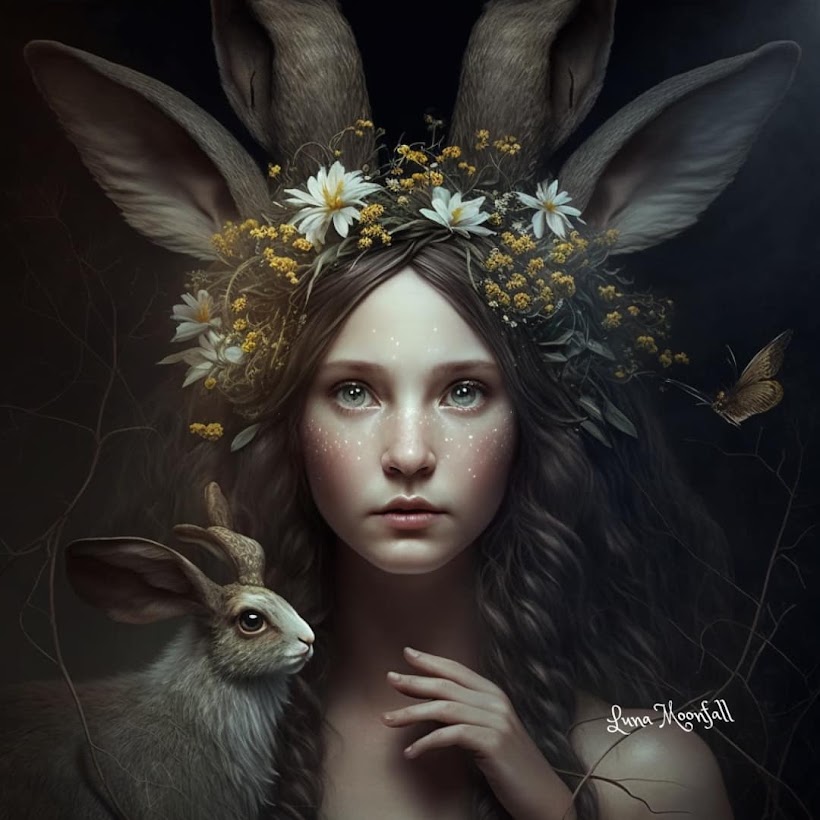
Hello. I'm writer Antoinette Beard/Sorelle Sucere. Welcome to my blog, which is dedicated to all the loving, intelligent, brave, wise, strong, gentle, kind, sweet-and-geeky, humble-and-patient, --- whether they have hands, paws, hooves, wings, fins, or even, --- yes, flippers, --- and to all eager readers and hard-working authors, everywhere.
Meanwhile...

I love all creatures. I consider them, all of them, to be sentient beings... I write thrillers, fantasy, mysteries, gothic horror, romantic adventure, occult, Noir, westerns and various types of short stories. I also re-tell traditional folk tales and make old fairy tales carefully cracked. I'm often awake very early in the morning. A cuppa, and fifteen minutes later I'm usually writing something. ;)
Thursday, September 26, 2019
Tuesday, September 17, 2019
Friday, September 13, 2019
Wednesday, September 11, 2019
Monday, September 9, 2019
Grow Salad Greens All Winter For Less Than 20 Dollars | Gardening Tips |...
I have to try this some year!!!
Saturday, September 7, 2019
Thursday, September 5, 2019
The History Of Hair Color, from "Hairfinder"...
Throughout the expanse of time during which man has been alive, evidence can be found to indicate that from the moment we became aware of ourselves, we became interested in adorning and adjusting our appearance. Whether to help us hide while hunting, or to make ourselves appear fiercer to our enemies or predators, or even to attract a mate, we have looked for ways to change how we look.
One of the ways in which we did this was by finding ways to color and adorn the hair. Archaeologists have found evidence to suggest that early man may have used minerals, plants and insects to paint their bodies and hair to appeal or repel. There is also recorded evidence from around 1500 B.C. that the Egyptians used henna. This theme is echoed throughout our history as the color of the hair has been considered important for different reasons and in different ways.
The particular color and the impressions associated with said color have varied throughout history, but they create an interesting theme when we consider the connotations and associations put forth today concerning haircolor.
Hair Color Attitudes:
Through the centuries the color of the hair has been deemed important in varying eras and the meaning attached to the colors changed as time moved forward. There have been specific eras in which red hair carried cultural and social significance (and even some demonic significance according to some), while in other eras blondes were hailed as the more important distinctions in the social ladder.
Here are some samples of the specific distinctions hair color has had throughout history:
The Gauls (1st Century B.C.) were known to dye their hair red as a mark of class and rank.
In the Dark Ages, red hair was thought to be a sign of witchcraft. This was probably because red hair is caused by a genetic mutation, and the first documented case of a natural-born redhead appeared around this time in Scotland.
Years later, Queen Elizabeth was responsible for affecting a change in impressions as her auburn hair was imitated as a reflection of her royal status.
At one point, yellow or blonde hair was worn (decreed by law) by “women of the night” and respectable women would use plant extracts and minerals to darken their hair. However, there has also been evidence to show that at the time that hairstyling was introduced in Roman society (300 B.C.) noble women tinted their hair red, middle-class women colored their hair blond, while poor women dyed their hair black.
During the Renaissance, women favored golden and blonde hair because it carried an angelic connotation. Venetian women were known to wear crownless hats with wide brims and to pull their hair through the top to be splayed evenly around the brim. The hair was then plied with a mixture of alum, honey and black sulfur to encourage sun bleaching.
And of course we all know of the fascination with Hollywood’s blonde bombshells who defined “sexy” for an entire era of men (and women). Few of these were natural, and only achieved their levels of fame as a result of coaxing from studio heads and the application of hair bleach.
There’s been ample attention given to blondes and redheads throughout history, which leaves some folks to think that these are the more favored colors, historically. On the other hand, brunettes make up 60 percent of the world’s population, and while they may not have the reputation for social attention-gathering of blondes and reds, they have always had the widest variety of shades from which to choose. Early hair colors - henna, indigo, sage and chamomile – could only darken the hair.
Because the darkest shades of the brunette range were most commonly found in regions like Asia, South America and Africa, the darkest shades of brunette did develop an exotic allure for many Europeans.
Attitudes toward hair color in modern times have always depended a lot on the passing trends of the day and to a large extent geographical location. For example, in South America, Africa, and Asia, brunette hair color is commonplace. Blondes and redheads were considered exotic and were often emulated.
In European nations, the reverse was often true, with darker hair colors being considered more alluring and foreign. Specifically, in areas where blondes are commonplace, such as in Scandinavian countries, being blonde isn’t really that big a deal, and few people make much of a fuss over a redhead in Scotland or Ireland.
One of the ways in which we did this was by finding ways to color and adorn the hair. Archaeologists have found evidence to suggest that early man may have used minerals, plants and insects to paint their bodies and hair to appeal or repel. There is also recorded evidence from around 1500 B.C. that the Egyptians used henna. This theme is echoed throughout our history as the color of the hair has been considered important for different reasons and in different ways.
The particular color and the impressions associated with said color have varied throughout history, but they create an interesting theme when we consider the connotations and associations put forth today concerning haircolor.
Hair Color Attitudes:
Through the centuries the color of the hair has been deemed important in varying eras and the meaning attached to the colors changed as time moved forward. There have been specific eras in which red hair carried cultural and social significance (and even some demonic significance according to some), while in other eras blondes were hailed as the more important distinctions in the social ladder.
Here are some samples of the specific distinctions hair color has had throughout history:
The Gauls (1st Century B.C.) were known to dye their hair red as a mark of class and rank.
In the Dark Ages, red hair was thought to be a sign of witchcraft. This was probably because red hair is caused by a genetic mutation, and the first documented case of a natural-born redhead appeared around this time in Scotland.
Years later, Queen Elizabeth was responsible for affecting a change in impressions as her auburn hair was imitated as a reflection of her royal status.
At one point, yellow or blonde hair was worn (decreed by law) by “women of the night” and respectable women would use plant extracts and minerals to darken their hair. However, there has also been evidence to show that at the time that hairstyling was introduced in Roman society (300 B.C.) noble women tinted their hair red, middle-class women colored their hair blond, while poor women dyed their hair black.
During the Renaissance, women favored golden and blonde hair because it carried an angelic connotation. Venetian women were known to wear crownless hats with wide brims and to pull their hair through the top to be splayed evenly around the brim. The hair was then plied with a mixture of alum, honey and black sulfur to encourage sun bleaching.
And of course we all know of the fascination with Hollywood’s blonde bombshells who defined “sexy” for an entire era of men (and women). Few of these were natural, and only achieved their levels of fame as a result of coaxing from studio heads and the application of hair bleach.
There’s been ample attention given to blondes and redheads throughout history, which leaves some folks to think that these are the more favored colors, historically. On the other hand, brunettes make up 60 percent of the world’s population, and while they may not have the reputation for social attention-gathering of blondes and reds, they have always had the widest variety of shades from which to choose. Early hair colors - henna, indigo, sage and chamomile – could only darken the hair.
Because the darkest shades of the brunette range were most commonly found in regions like Asia, South America and Africa, the darkest shades of brunette did develop an exotic allure for many Europeans.
Attitudes toward hair color in modern times have always depended a lot on the passing trends of the day and to a large extent geographical location. For example, in South America, Africa, and Asia, brunette hair color is commonplace. Blondes and redheads were considered exotic and were often emulated.
In European nations, the reverse was often true, with darker hair colors being considered more alluring and foreign. Specifically, in areas where blondes are commonplace, such as in Scandinavian countries, being blonde isn’t really that big a deal, and few people make much of a fuss over a redhead in Scotland or Ireland.
Sunday, September 1, 2019
Subscribe to:
Posts (Atom)
